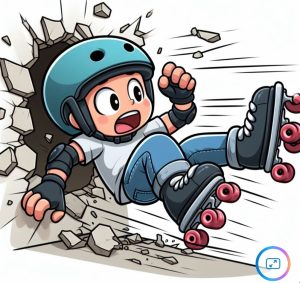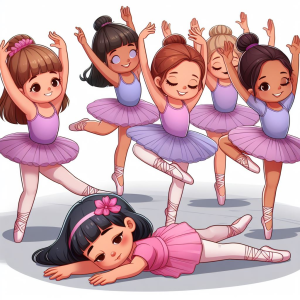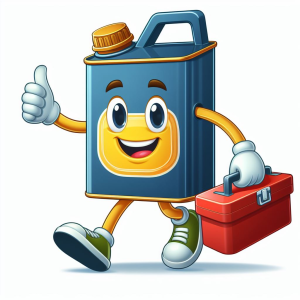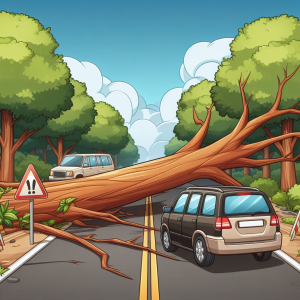

Blog 1: The Components
Did you miss the first blog in this series?
So, you have your accessibility program’s pair of skates. You understand all the components and how they work together. You are feeling confident and excited to start rolling and moving forward. What’s next?
Cost and Quality
You really do get what you pay for

I bought $200 skates. They were great, they did the trick, I didn’t know any better. I upgraded to $800 skates. They are awesome! They go faster, they turn better, I can figure skate, my feet don’t cramp after a 3 hour skate session.
You can use free tools. There are a lot out there. For some examples of good and poor free tools check out my video Polished (and sometimes puzzling) plugins to perfect your accessibility, which I presented at Knowbility John Slatin AccessU 2024. However there is risk with free tools, they can be time consuming and frustrating to use (looking at you Color Contrast Analyzer plugin!).
Just like roller-skates, if you buy an enterprise tool. It’s easier to use, more accessible, reports are generated seamlessly. If you’re lucky they can even raise the bugs in Jira. That said there is no point buying tools when you are not ready for them. That is a sure fire way to not get a return on investment and see your budget get cut.
How do we get rolling and stay rolling?
You need to start slow

Never skated before? No problem. The guy behind the skate rental counter is tightening those bolts so you have more control.
If you create your first Access and Inclusion Plan (AIP) and say “We are going to be WCAG 2.2 AA compliant in the next 6 months” then you are going to burn people out, lose people’s confidence and probably decide the effort is not worth the risk. Sadly the whole program might get abandoned.
Instead, Pick something small as a proof of concept, then help it grow.
One of the common places to start on a full accessibility program is recruitment. Make your recruitment processes more accessible and you are going to tap into a larger talent pool. For a digital accessibility program, start by creating accessible document templates and roll them out to your organisation. You would be surprised at the number of organisations which don’t even have document templates, let alone accessible ones!
You need to keep your eyes on where you are going

The number 1 rule of skating is: don’t look at your feet! Guaranteed 100% if you are busy looking at your feet you are going to fall over. Skating has NOTHING to do with your feet. It is all weight distribution, confidence and practice.
If you build a strategy and focus on the small problems, neglecting the bigger picture you are going to fall. Your strategy needs to be dynamic and give you the ability to pivot.
The world is full of disruptive changes. In my parent’s time it was TVs. My era brought the internet into the mainstream. For the next generation it will be AI (or maybe trips to Mars, who knows). These were large disruptive technological advances. If you stick to a standard strategy and fail to pivot for these disruptive breakthroughs, you will come in behind your competitors.
Please do not misunderstand. I am not saying you need to go out now and invest in AI to do your digital accessibility (yeesh I hate to think what would happen right now) but at some point it will become necessary, and think what it can already leverage for you. Be My Eyes is amazing in the preciseness of it’s AI descriptions. Automated captions have come a long way since Rhett and Link stated making hilarious caption fail videos. Keep open minds.
It’s easier to practice inside before in public
Unless you are Kylie because she loves to do things the hard way!

If you start internally no one can hear you scream. Were you perhaps a little ambitious? Did you set yourself up for a failure? Did you burn your team out?
It is much easier to save face when you haven’t made a huge press statement saying “We will be compliant in 6 months” and then you put an overlay on your site. Pick an internal project or a small external client. Focus on uplifting that and then ease your way up to bigger projects.
Once you are comfortable with the internal systems, that is when you should upgrade to the larger challenges and start communicating external plans.
It is better to learn the right techniques in the wrong order than the wrong techniques!

I have been skating now for 12 months. For the first 9 I didn’t know how to stop. But I was darn good at weaving. So good in fact, that when I finally chose to go to skating lessons the instructor asked if I was a derby skater! I started skating outside (the hard way) then moved into the rink (arguably the easy way). I could go forward skating, scissors, crossovers, backwards, single leg lifts, all before I learnt how to stop. The good thing is, because I had the fundamentals of balance down, learning to stop from an instructor suddenly became a lot easier.
Maybe you want to work on your mobile app first and then your website and after that decide to look at your documents. That is perfectly OK. But you know what they all have in common?
- Images
- Text alternatives
- Colour contrast
- Headings and structure
- Ease of reading
- Keyboard access (yes even on mobile apps)
Sure, your websites might use ARIA and your mobile apps are very different between Android and iOS, but a lot of the same fundamental privileges translate. So if you understand them it is easy to learn others in any order.
You need to show some confidence

I swear accessibility programs can smell fear. People who a nervous about their accessibility programs inevitably fail to deliver them, because they find them too challenging, are worried about the repercussions of team members not understanding them and so set no KPIs and make everything a “nice to have” or “Non-functional requirements”. Sometimes you just need to show that confidence and not only will things become easier people will follow you too.
I was working at a big telco. They had an AIP but no one was trying to achieve it. They had a disability employee network but it was mostly dormant because people had lost confidence as no one was driving change and they were nervous challenging problems.
I got involved, started asking the big questions as to who was responsible for the goals of the AIP and proceeded with confidence reaching out to the action owners. I was confident this AIP was the right thing and everyone would agree. Sure not everyone agreed, but my confidence of explaining why they should care and not meekly walking away resulted in stakeholders accepting responsibility, goals being met and a larger amazingly engaged disability employee network being created. More people started speaking up and it drove change and built further confidence.
Always be confident with your actions and be accountable
Wheels are critical and oil those bearings

It can’t be all left to your testing team. A plan, metrics, KPIs and accessibility champions are needed to ensure your success. Without them you are going nowhere. You just lost your wheels.
Do you think you can get your site compliant and you are done with your accessibility? No. This is like never cleaning the bearings in your skates, They are going to get gunked up with dirt, and you will end up having more difficulties than when you started.
Treat your champions with kindness, assist by defining plans and goals and most importantly celebrate the wins. You are not always going to get exactly what you hoped for, but if you neglect celebrating your achievements it feels like you are just skating around in circles and that quickly loses its appeal.
Toe stops are useless if you don’t know how to handle them
What is worse than a quiet stakeholder? A noisy one.
Your stakeholders determine how quickly you stop and if they are not aligned with your plan they are going to make you crash and burn. You are aiming for a stakeholder who is engaged but not constantly dragging your team down.
When working with stakeholders always keep in mind
- They are extremely busy
- They want to see results quickly, but even slow results are better than no results
- They want to keep your organisation moving, but they are not afraid to stop something out of control
Give your stakeholders regular feedback, make sure they know the actions both of you need to take, as well as what red flags they should look out for, so they can bring things to a graceful stop when necessary.
Crucial facts often forgotten
You own the skates, they do not own you.

I am channelling my inner Yoda right now but believe me. You own the skates, they work for you not the other way around. Even if sometimes it feels like you are out of control, you are the master of your skates. At any time you can take off your skates, ease them up, slow them down or perform maintenance. YOU control THEM. It is exactly the same for digital accessibility. You own the content, you own the processes, you own the policies (I am speaking at the organisation level here). It is in your ability to drive these policies, you control it, it does not control you. If you forget that, everything gets exponentially harder.
You have to follow the law

This somewhat goes without saying, you do need to follow laws. I will never be skating down the Opera House stairs these days. Even is that is what my friend did in the 90s (and backwards too).
With digital accessibility there are a lot of different laws which depend on your region. In this article I am not going to go through the details of all of them. You can find this information later in my training courses, but some important laws include
- Australia’s Disability Discrimination Act (DDA)
- The United Nations Convention on the Rights of Persons with Disability (CRPD)
- The American with Disabilities Act (ADA)
- America’s Air Carrier Access Act (ACAA)
- The Canadian Human Rights Act
- The Marrakesh Treaty
You can’t control the environment

Sorry it’s a fact of life you can’t control the environment.
An accessibility program is just part of a much bigger environmental system in your organisation. You can not control it all, but you can control how you react and adapt. I dislocated my arm twice in two days because I could not control my environment. My choices in responding to the environment however determined the outcome.
I was skating at the rink in the middle of school holidays, I usually skate outdoors (ironically less obstacles) this day there must have been 300 kids on the rink. Kids were falling as far as the eye can see, it was a kidalanche (kid avalanche). I decided to seize an open gap, and then a kid went straight down in front of me. I had no control over that environment, only my reaction to it.
My reaction was: I’m an overweight middle aged woman and that is a five year old child with their fingers out in front of me, if I don’t change trajectory I am going to roll over and break that kids fingers. I like to think I am a nice person. I decided to jump the kid (not the wisest move but minimised damage to the child) I stacked the landing and crashed into the side of the rink.
Next day similar thing, a kid literally kicked the legs out from under me and my instinct was to roll sideways to protect my head. Cue superhero pose and crashing on my arms and ribs. Dislocated shoulder.
I did not have control over the environment, but I had control over my reaction. If I hadn’t made a quick deliberate change to my responses, I would have broken a young child’s hand or my head would have hit the ground full force and I would probably be roller-skating with the angels right now.
So with all that said we all crash and often because at some point in your environment…
You are going to hit a roadblock

You always need to plan for the risks. When skating you need to weigh up the risks of protection vs comfort. I for example, wear wrist and knee pads because otherwise darn it hurts when you crash. However I do not wear a helmet, elbow pads or padded shorts. I assessed the risk to comfort ratio and this works for me. Only once have I hit my head and that was stupidity! I thought going skating outside in the rain and going down a little slope was a great idea. The crash may have knocked some sense in to me as I have not tried it again. As for landing on my backside, yep it has happened, but I have enough padding so don’t need any more.
When you are starting out on an accessibility journey it is the same thing, you need to prepare for roadblocks. For a deep dive on accessibility roadblocks check out my next article How Digital Accessibility is Like Roller-Skating (Part 3: Roadblocks and manoeuvring) which is coming soon.
